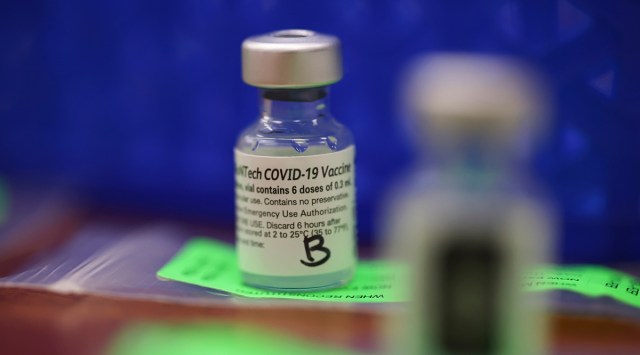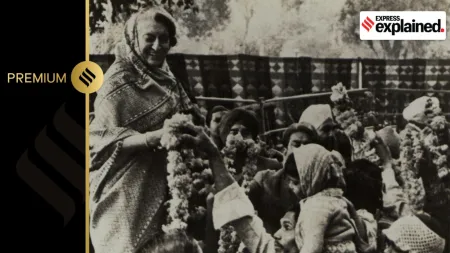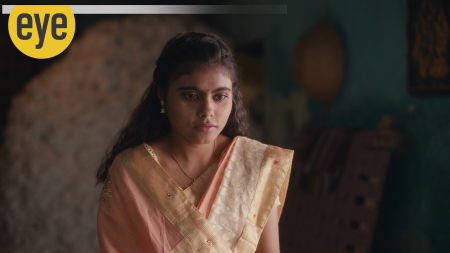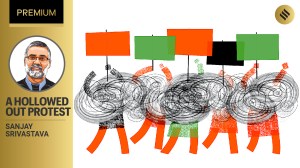- India
- International
US is wasting vaccine doses, even as cases rise
Reasons for vaccine wastage include breakage, storage and transportation problems, expiration, and shots that were prepared but not used after people did not show up for appointments, officials said.
 A vial of the Pfizer-BioNTech coronavirus vaccine at a vaccination site in Denver, May 8, 2021. A survey of data from 10 states shows that more than one million doses have gone to waste since the nation began administering COVID-19 vaccines in December. (Kevin Mohatt/The New York Times)
A vial of the Pfizer-BioNTech coronavirus vaccine at a vaccination site in Denver, May 8, 2021. A survey of data from 10 states shows that more than one million doses have gone to waste since the nation began administering COVID-19 vaccines in December. (Kevin Mohatt/The New York Times)By Dan Levin
A survey of data from 10 states shows that more than 1 million doses have gone to waste since the nation began administering COVID-19 vaccines in December.
Much of the loss has come as demand for inoculations plummeted, with the daily rate of vaccinations now at less than one-fifth of its peak average of 3.4 million shots, reached in mid-April.
More than 110,000 doses have been destroyed in Georgia, officials there said. Of the more than 53,000 doses wasted in New Jersey, nearly 20,000 were discarded in June, up from around 4,000 in April. In Ohio, more than 370,000 doses have been reported as unusable by state providers, while around 50,000 doses in Maryland were not used, officials said.
Reasons for vaccine wastage include breakage, storage and transportation problems, expiration, and shots that were prepared but not used after people did not show up for appointments, officials said. In many states, data shows that wasted or unusable doses are no more than 2% of those received from the federal government and successfully administered.
In Georgia, more than 8.5 million doses have been administered; the state’s unused doses total just 1.4% of that number, officials said. Idaho has wasted about 2% of delivered doses, and New Jersey less than half of 1%.

Other states are likely to face some of the same issues as the 10 states whose data was reviewed by The New York Times, suggesting that the number of wasted doses in the country could be far higher. Other states, including North Carolina and South Carolina, did not respond to requests for information. State data does not include all doses that the federal government ships directly to chain pharmacies, so there could be unaccounted-for waste.
The Centers for Disease Control and Prevention tracks wasted doses, but did not respond to a request for that data, which would provide a broader national picture.
The rise in wasted vaccine doses reflects the challenge American health officials face in inoculating residents, even as the more contagious delta variant of the coronavirus fuels outbreaks among the unvaccinated across the United States. Delta is also one driver of a rise in cases globally, and many countries are begging for vaccine doses.
Full vaccination offers strong protection against severe disease and death, including from the delta variant, and the CDC says breakthrough infections in vaccinated people are rare. However, recent data suggest that vaccinated people infected with the delta variant may transmit the virus to others, a finding that contributed to the CDC’s recent decision to advise vaccinated people in COVID hot spots to wear masks again in indoor public areas.
Vaccinations are now ticking upward in some states; more than 850,000 shots were recorded on Friday, raising the daily national average to more than 650,000 from about 500,000 three weeks ago. Still, more than half of the U.S. population is not fully vaccinated, according to a Times database. That includes children younger than 12, who are not yet eligible.
“Early on, it was kind of a crisis because people wanted it and couldn’t get it, and now it’s a crisis because we’ve got it and people don’t want it,” said Dr. Marcus Plescia, who represents state health agencies as the chief medical officer for the Association of State and Territorial Health Officials.
Many states have asked about redistributing unused vaccines abroad, but once the doses are shipped out to states, federal regulations prohibit recalling them. And some countries, like Canada, have declined states’ offers of surplus vaccines.
“Here we are with loads of vaccine, and there are other countries in the world where people are desperate for vaccination,” Plescia said.
With vaccinations lagging, some state health officials have directed providers in recent months to open a new vial even if some of it goes unused.
“It’s better to give two doses and waste 12 than to leave 14 doses sitting in the freezer,” said Kristen Dillon, a director of the Oregon Health Authority’s COVID-19 vaccine Planning Unit. Oregon has reported more than 78,000 doses as nonviable, the “vast majority” of which were unused doses from opened vials, officials said.
In Arkansas, where just 36% of residents are fully vaccinated, nearly 55,000 doses had gone to waste by mid-July, up from around 580 in mid-March, as officials prioritized vaccinations over saving doses. “If we have the opportunity to give the vaccine, let’s go ahead and do it,” said Robert Ator, a retired National Guard colonel who runs the state’s vaccination effort.
Like officials in many other states, Ator said he stopped ordering additional doses in April as demand dropped, and he has since shifted to repackaging doses in smaller quantities for distribution to drugstores and doctors’ offices. The state’s stockpile has decreased from 550,000 doses in April to about 350,000 in late July, he said.
Despite his efforts, Ator projected that about 100,000 doses of the state’s stockpile could expire over the next three months.
Must Read
May 11: Latest News
- 01
- 02
- 03
- 04
- 05






































